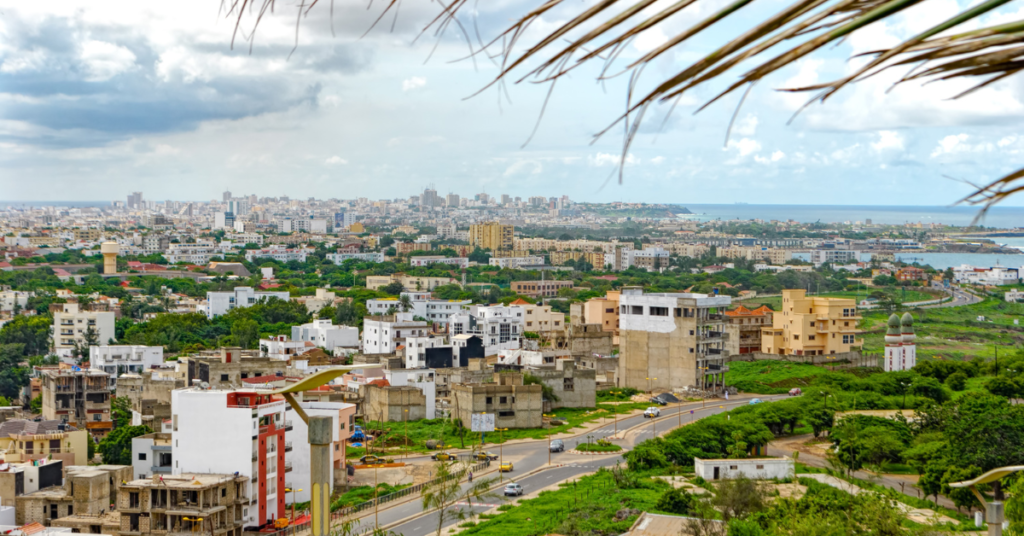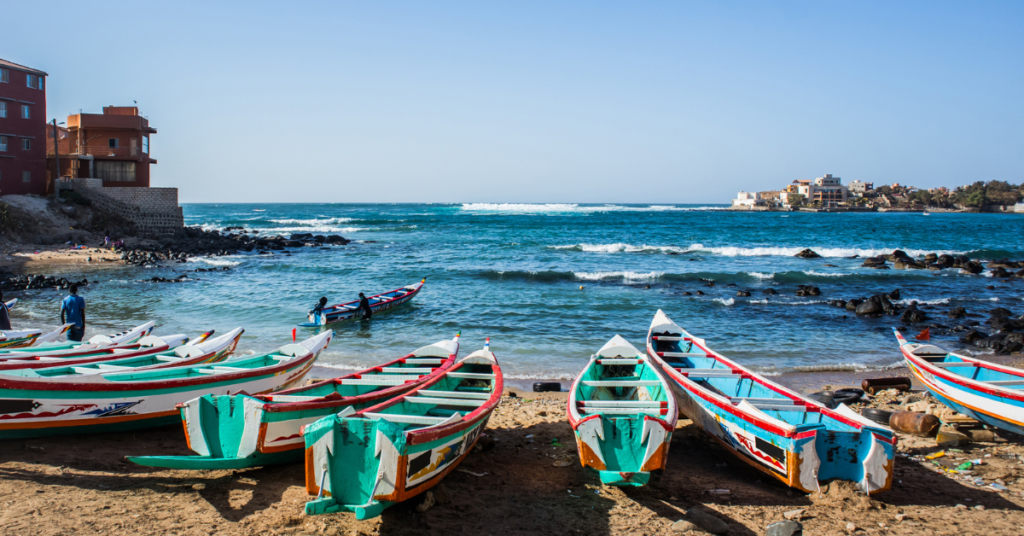Kedougou boasts a vibrant presence of diverse ethnic communities, notably the Bedik and the Bassari, which stand out among the predominantly Muslim Pulaar and Jaxanke/Malinke populations in the region. These minority groups blend strong animist traditions with their Christian beliefs, resulting in distinct and fascinating cultures. Engaging with these ethnic communities provides a firsthand experience of their unique cultural practices and ceremonies. Keep reading this guide, and discover how to do the amazing Kedougou Cultural Circuit.
One of the highlights of spending time with these minority groups is the opportunity to immerse oneself in the authentic local drinking culture of Senegal. Don’t miss the chance to sample local delights such as palm wine or mead, which are renowned in the region. This experience offers a rare glimpse into the traditional beverages enjoyed by these communities, adding to the richness of your cultural exploration in Kedougou.

Kedougou Minority Cultures Circuit Itinerary
Day 1
Upon reaching Kedougou, take some time to gather necessary provisions and embark on your journey to Bandafassi, where you can spend the night. This allows you to kick-start your exploration and immerse yourself in the unique ambiance of this captivating destination.
Day 2
Prepare your essential items as you gear up for a thrilling hike up the mountain to reach the enchanting Bedik village of Echewar. For those seeking a more adventurous experience, consider spending the entire day atop the mountain and exploring neighboring villages like Iwol. Alternatively, allocate a few days to fully immerse yourself in the Bedik culture, accompanied by a knowledgeable guide who can navigate you through the various villages scattered atop the mountain.
After an eventful day, indulge in a satisfying dinner and find accommodation in the captivating village of Bandafassi. This will provide you with a comfortable place to unwind, allowing you to recharge and reflect on the incredible experiences encountered throughout the day.
Read more: What Do I Need To Know Before Going To Senegal?
Day 3
Begin your day early, ready to start on a wonderful excursion to the enthralling Bassari nation. There are two ways to go to Salemata. You can try your luck hitching a ride along the way, or you can return to Kedougou and obtain a seat in a sept-place car. If time is of importance or you prefer to stick to a schedule, it is best to hire a car through a guide for a simpler and more trustworthy transportation experience.
Upon arriving in Salemata, you can choose to hire a moto or catch a bush taxi to Ethiolo, or alternatively, opt for your own hired transport to travel directly to Ethiolo. Once there, take the opportunity to immerse yourself in the vibrant Bassari culture. Explore the very best of what Bassari has to offer, and consider hiking up the hill from Salemata to discover other intriguing Bassari villages. The day will be filled with captivating cultural encounters and enriching experiences.
As the day comes to an end, discover lodging in Ethiolo or Salemata to provide a nice spot to stay and recharge for the night.
Day 4
Make your way back to Kedougou by passing through Salemata. If you do not have access to private transportation, it is advisable to head to the local garage early in the morning. This will give you the best chance to secure a spot in a sept-place vehicle for your journey back to Kedougou. Reserving a seat in advance will ensure a smoother and more convenient travel experience.
Where Is Kedougou?
Kedougou, located in Senegal’s southeastern area, reveals a fascinating realm of tumbling waterfalls, untamed wildlife, gorgeous red clay pathways, and countless other delights. Kedougou, previously isolated from the rest of the country, has developed into a vibrant metropolis, assuming the position of regional capital following its separation from Tambacounda in 2008. Kedougou has acquired significance on the map due to the recent completion of a road connecting Senegal and Mali, as well as the thriving gold mining sector, resulting in significant expansion and development within the city and its surrounding region.

How To Get To Kedougou?
By Sept-Places
Every morning, sept-places depart from Garage Pikine in Dakar bound for Tambacounda. To ensure a timely departure, it is advisable to arrive at the garage before 08:00. A ticket for the journey costs 9,500cfa, and it is customary to engage in some friendly negotiation for your baggage. A reasonable price for one or two bags would range from 500 to 1,000cfa.
Once you arrive at the Tambacounda garage, you can easily find sept-places heading to Kedougou by asking for directions. The ticket fare for the Tambacounda to Kedougou journey is 6,000cfa, and additional charges may apply for baggage. The total duration of travel can vary between 12 to 16 hours, depending on the specific circumstances.
Read more: The Ultimate Senegal Trip: How Many Days To See It All
By Bus
There are several bus companies providing transportation between Dakar and Kedougou. The Niokolo bus company offers overnight trips with comfortable buses equipped with air conditioning. They have scheduled departures from Dakar to Kedougou on Mondays and Fridays, and from Kedougou to Dakar on Tuesdays and Sundays.
Reservations should be made in advance, and the fare is 11,000 cfa per person one way. Teranga Transports is another popular option, departing from the Medina neighborhood in Dakar and traveling directly to Kedougou. Tickets cost 9,000 cfa per person, and their schedule varies except on Tuesdays.
Cascade Transport is a newer company based in Kedougou, providing buses without air conditioning. They also offer shuttles to Dindefello. Their offices are located in Dakar and Kedougou, and they have scheduled departures on Mondays, Thursdays, Wednesdays, and Saturdays.
Guided Tours
Hiring a guide is highly advised in order to properly explore and appreciate Kedougou’s cultural and natural beauties. It can be difficult to navigate the region without language skills or local expertise. Hiring a guide will not only improve your travel experience but will also help the local economy. Kedougou’s language and culture are separate from the largely Wolof-speaking north. A skilled guide will teach you more about the region’s history, culture, and nature than you could learn on your own. There are a number of respected guides in the area, and a list of them is provided below.
- Doba Diallo (+221 77 360 6401, dobadiallo@hotmail.com): With over a decade of experience, this seasoned guide is based in Kedougou and the village of Dandé. They specialize in organizing excursions not only in the Kedougou region but also throughout Senegal. Fluent in French, Spanish, English, Pulaar, Wolof, and Bedik, they possess a diverse language skill set to cater to a wide range of travelers. Their extensive knowledge and expertise make them a reliable choice for an enriching and informative journey in Senegal.
- Alpha Diallo (+221 77 987 3672, dialloa95@yahoo.fr): With over a decade of experience, this experienced guide operates from the villages of Thiaba Karé and Dindefelo. They specialize in organizing excursions not only in the Kedougou region but also throughout Senegal. Their hiking tours, priced at 15,000cfa, provide a thrilling adventure for nature enthusiasts. Additionally, they offer bicycle tours from Thiaba Karé, allowing visitors to explore the surroundings on two wheels. Fluent in French, Spanish, English, Pulaar, and Wolof, they have the language skills to cater to a diverse range of travelers. With their expertise and knowledge of the area, they ensure an unforgettable experience for their clients.
- Djibril Camara (+221 77 029 6703, camaracascade@yahoo.fr): With deep roots in Dindefelo and extensive experience as a guide, this native is an exceptional source of knowledge about the Dindefelo Community Nature Reserve. Their expertise in the local area makes them an invaluable resource for discovering all there is to know about the reserve. Fluent in French, Spanish, and Pulaar, they are equipped with the language skills to effectively communicate with a diverse range of visitors. Whether you are interested in the wildlife, ecology, or cultural aspects of the reserve, this guide will provide you with an enriching and informative experience.

I’m a total Africa enthusiast! I’ve been exploring this amazing continent for years and I can’t get enough of its diverse cultures, stunning landscapes, and incredible wildlife. From hiking through the savannahs to sampling local cuisine, I’m all about immersing myself in everything Africa has to offer. I’m constantly on the lookout for new and exciting experiences, and I love sharing my passion and knowledge with fellow travel lovers. If you’re looking for an adventure like no other, Africa is the place to be, and I’m here to help you make the most of it!






